Investing in Diamonds? Industry Insider Sounds Warning…
If you are a retail investor or a consumer thinking about buying diamonds as a form of investment, you will be thanking me for saving you thousands of dollars (if not tens of thousands) by the end of this article.
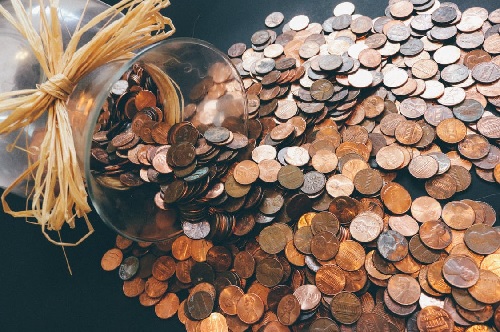
It has recently come to my attention that a growing number of businesses (both online and offline) are marketing diamonds as investments that will “appreciate in value” and “grow your wealth”.
As a consumer advocate, I noticed a disturbing trend of queries from shoppers who are treating engagement ring purchases as investments.
Likewise, there is also a similar phenomenon in the financial markets where blogs and businesses are actively recommending retail investors to buy diamonds as an alternative form of investment.
Now, I need to get an important point across and will be honestly blunt here.
If you are a non-trade person and fall into either of the categories described above, please stop whatever you are doing and read the next sentence carefully.
You would be a fool to think you can make money by investing in diamonds.
This is a dire warning to all would-be diamond investors and you would do well to heed it. Otherwise, you will find yourself in the unpleasant situation of losing money faster than flushing it down the toilet.
That sentence has summarized this entire article for you. However, if you are interested to find out why diamonds are terrible investments, grab a cup of coffee, sit back and start reading…
The “Top” Reasons Why You Should Be Investing in Diamonds
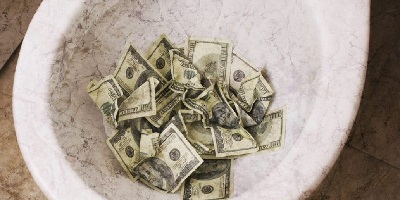
Over the years, I’ve heard of countless reasons why diamonds are supposedly good investments from financial ‘experts’ and jewelry retailers. And for the record, these investment reasons are just outright nonsense.
Here’s what you will likely hear in sales pitches or read about in marketing materials:
- Diamonds offer the highest concentrated form of portable wealth.
- They are widely recognized around the world.
- Diamonds can be easily liquidated.
- Diamonds are rare and have a limited supply in nature.
- They act as a diversified asset which can hedge against recessions.
- Will appreciate in future value.
- Can be worn for aesthetics without depreciation.
Now, I could literally list more reasons to fill up the entire page but I’m not going to do that. Instead, I want you to do a quick Google search using terms like “investing in diamonds”, “why invest in diamonds”, “make money diamonds”, “financial investment diamonds”.
I want you to check out some of the search results and read through some of the justifications for yourself. After that, take a step back and ask yourself where is the information originating from.
Did you notice a trend?
If you can’t, try questioning the motives behind people/businesses who publish these information. It shouldn’t come as a surprise that the people preaching the benefits of diamond investments are the same people who have a financial motivation to do so.
The point I want to make here is: do not blindly believe everything you read or hear without applying any critical thinking.
Think about it. If are diamonds a good investment as advertised, why would retailers or commission-based salespeople be lining up to sell you their “golden goose”?
Why a Diamond Engagement Ring is NOT a Good Investment?
The answer is really straightforward.
That’s because the typical consumer/retail investor always loses money when they dip their hands into diamond investing. The fundamental reason behind this is that diamonds depreciate in value the moment they are sold.
Like buying a car, the moment someone walks out of a jewelry store with a diamond ring, it instantly loses a huge portion of its value. You should also note that the resale market for diamonds is illiquid and most people will have an extremely tough time selling a diamond.
With that, let’s dive into indepth reasons why people lose money when investing in diamonds…
Reason #1 – Paying Retail Prices And Expecting to Make Money is a Joke.
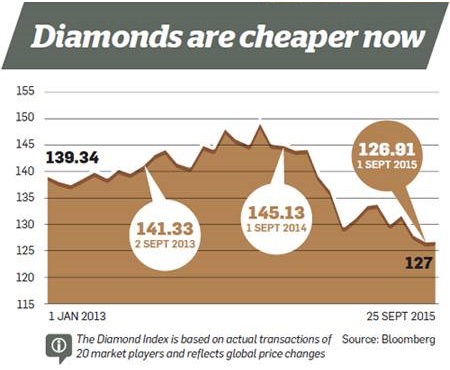
Diamonds have recently become cheaper. Should you be running out to buy one now?
Economics 101 teaches you to buy low and sell high in order to make a profit. And herein lies the biggest problem.
When you buy a loose diamond or an engagement ring from high-street or any other retailer, you need to understand that you paying a mark-up anywhere between 30%-200% for retail pricing.
I will illustrate this with a simple example.
Let’s say a diamond costs a retailer $1,000 from the supplier and we assume this is the diamond’s intrinsic value (in real life it’s going to be less). If you paid the retailer $1,500 for the diamond, you would have immediately lost 33% of your capital ($500/$1,500).
In order for you to make a 10% return on your diamond investment, you would have to sell the diamond for $1,650 ($1,500 + 150). This means that the world diamond prices must rise by 65% in order for a $1,000 diamond to appreciate to $1,650.
That’s taking an extremely optimistic view on prices to climb that high in the market. How likely is such a scenario going to happen and how many years do you think it would take to do so?
“Hey! If I Could Buy at a Wholesale Price, I Would Be Able to Make Money!”
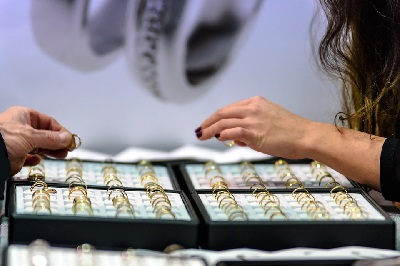
Since buying at retail prices is a sure-fire way to lose money, I know some quick thinking readers would immediately be thinking of buying from alternate sources such as a direct wholesaler.
That’s easier said than done.
Before I explain further, let’s set things straight about the differences between wholesale and retail.
Cambridge defines a wholesaler as: “someone who buys and sells goods in large amounts to shops and businesses”. They also defined a retailer as: “a person, shop, or business that sells goods to the public.”
From experience and the emails I received from readers, I know that consumers frequently get suckered into “wholesale” scams and this is a prevalent problem in the industry.
So, how does it work?
Basically, the scam works by taking advantage of greed and the stupidity of uneducated consumers. I’ve actually written an entire article on wholesale diamond scams and how to avoid them. If you are interested to find out more, click here.
In order to market their goods in better light, unethical retailers often claim to sell at wholesale prices. This is done to give the false pretense of lower prices so that the buyer feels like they are getting a great deal.
The truth is, wholesale prices don’t exist for non-trade personnel. And get this, wholesalers will not deal with the public or individuals directly unless you buy in BULK volumes.
If a seller claims they are offering “wholesale” prices and you are only buying a couple of stones, guess who the sucker in the transaction is?
The bottom line is, if you are buying an individual stone instead of buying in bulk volume, you are transacting with a RETAILER at RETAIL PRICES.
This is why I mentioned earlier; if you are a non-trade member or don’t have indepth knowledge of the industry, stay away. Otherwise, you will find yourself at the losing end of an investment.
And that’s just one of the problems a typical diamond investor would face. There’s more to come.
Reason #2 – Misconception About “Investment Grade Diamonds”
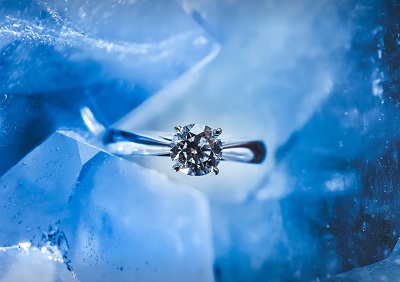
The term “investment grade diamonds” is often loosely used and uneducated buyers usually fall prey to marketing shenanigans. Many people fail to understand this. Just because a diamond is a fancy intense pink or has D color/IF clarity ratings, it doesn’t mean the diamond is going to be a good investment.
I will reiterate; diamonds are terrible investments. You are almost guaranteed to lose money regardless of buying them from retail or your “secret” wholesaler contact.
Tell me if this sounds like you (because I get emails like these regularly):
“Hey Paul, I just came across this 5 carat diamond with a D color and IF clarity rating graded by GIA. I’m interested in buying this diamond because the jeweler told me its value will go up overtime due to its rarity. Also, it makes for a perfect anniversary gift (or an engagement ring) for my wife.”
Well, let me pop that bubble because these diamonds are NOT rare in the context of being investment grade. Let me show proof by performing an inventory search for 5 carat sized diamonds (D/IF/FL) on BlueNile.
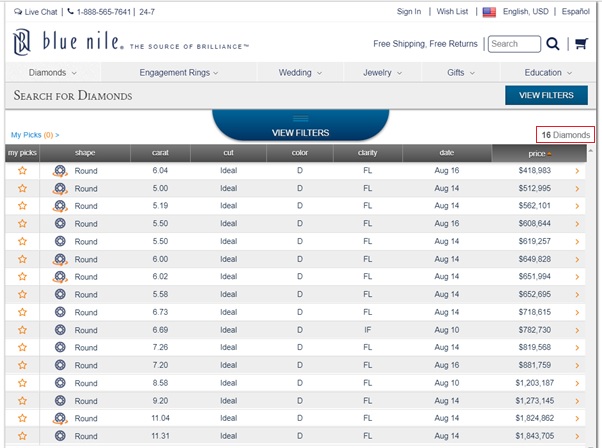
Screenshot captured on 9th August 2017. 16 diamonds with D color IF/FL clarity.
Likewise, I often hear salespeople touting 1 carat or 2 carat sized diamonds as being good investments. After all, it seems like some of the most popular sizes that people buy for engagement rings. The truth is, a D color IF clarity diamond at these sizes is really no big deal. There are plenty to go around.
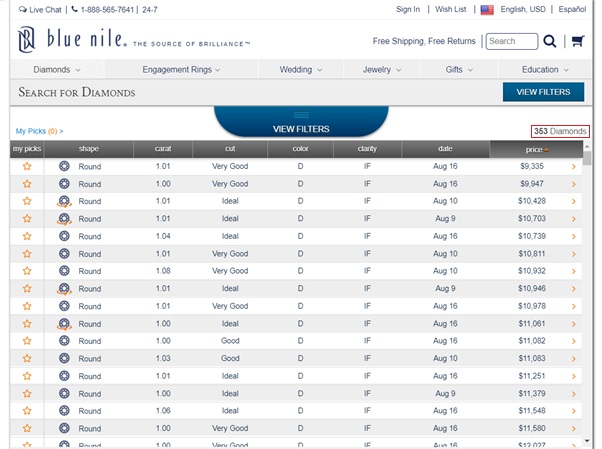
Screenshot captured on 9th August 2017. 353 diamonds between 1 carat to 2 carats with D color IF/FL clarity.
Mind you, these screenshots only represent a very small subset of diamonds available in the market. To give you some perspective into the grand scheme of things, BlueNile is just one out of the thousands of retailers in the industry.
In reality, the amount of inventory is going to be significantly larger when you take into account the inventories of other retailers plus the pool of diamonds in private vaults and collections which aren’t placed for sale.
If a D color internally flawless diamond is truly as rare as sellers claim them to be, you better think again. Why is there an ample supply in the market and what makes the particular D/IF diamond you are going to buy any special?
Just to be clear, this rule applies to the lower spectrum of fancy color diamonds too. And when I mean lower end, I’m referring to colored diamonds below the range of 1-2 million dollars.
If you think buying a 0.5 carat fancy intense pink diamond is a great investment because it is “rare” and “coveted”, you are simply being delusional. After reading this, if you still believe someone who tells you what an awesome asset a 3 carat fancy yellow diamond is going to be, you probably deserve to get ripped off.
Screenshot captured on 9th August 2017. 99 yellow diamonds available above 3 carat sizes.
By now, I hope you are seeing a pattern here. Are the diamonds you are buying for investments really that rare and limited in supply? Are other collectors willing to pay an arm or leg for that stone? What makes the diamond you are going to invest in so special?
As I had just shown you, it’s not that hard to do some simple research and look at the statistics for yourself.
I’m going to dish out some honest advice here: Don’t expect gemstones to be good investments when their intrinsic value is less than 1-2 million dollars. What may seem like a one-of-a-kind fancy orange diamond or 5 carat internally flawless diamond is really nothing special compared to what’s available in the broader marketplace.
The people who turn a profit on “investment grade” diamonds (e.g. 0.50 carat fancy pink diamond or a 2 carat IF diamond) are usually the dealers/retailers who are actively marketing and selling to foolish wannabe investors.
Reason #3 Listen Up, Here’s the Truth About Selling a Diamond
Businesses that advocate buying diamonds as investments often sugar coat the ease of selling a diamond and how simple it is to liquidate your investment for cash.
In theory, everything sounds easy because you could theoretically walk into any jewelry store to offload your investment or quickly sell your diamond to someone down the street. The argument is that the demand for diamonds is always going to be there.
However, the reality is far from that.
As a retail investor or an average consumer, you will quickly realize how difficult it is to unload your investment when the need arises.
Jewelry stores (yeah, try bringing the diamond back to the place you bought it from), pawn shops or selling the diamond off to another individual are the typical options available for a small transaction (less than $50,000).
And if you are an investor who thinks you can make a tidy sum of profit in this manner, I’m sorry to say you will be in for a rude shock (unless you somehow managed to con someone who’s just as dumb to believe in the notion of diamond investing).
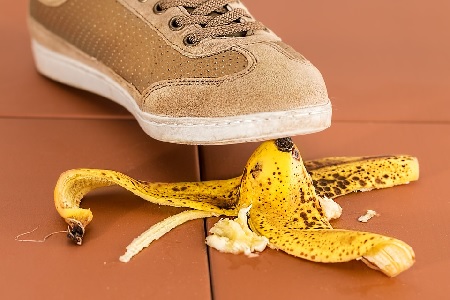
Let me give you a run down on the business side of things. This will provide you with a better idea of how things work in the industry and why selling a diamond is going to incur you a capital loss.
First of all, diamonds are expensive and most physical stores don’t keep lots of them in their inventory. If you do the math, you will quickly understand why. If a business was to buy 100 diamonds worth $1,000 each, a million dollars of their working capital will be locked up.
This is why many jewelers sell diamonds on consignment or call in goods from their suppliers only when required. They don’t have to fork out the cash upfront until a sale takes place with a customer. As much as possible, jewelry stores don’t want to carry physical inventory or have their cash tied to them.
Now, imagine if you are a business owner and someone walks into your store to sell a diamond ring, what would you pay for it?
Are you going to pay the seller the retail price (typically 50-100% above wholesale prices) for the ring?
The answer is no because you won’t be able to make a profit.
Are you going to pay the seller the wholesale price that you can get from your supplier?
The answer is again no because you are taking on the risk to pay upfront for an item which you may not be able to resell in near future.
If you want to buy the ring, you are going to offer way below the wholesale price in order to mitigate your risk. And even if you agree to sell the diamond on consignment, you are going to take your cut by charging a commission.
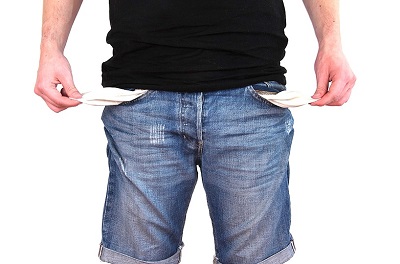
This is what’s going to happen when you sell diamonds…
I hope this is making sense to you as a consumer. If you try selling your diamond to the jewelry shop or pawn store, these people are going to pay you significantly less than what it would cost them from their supplier. Otherwise, why would they want to buy the item off you?
And of course, the next thing I’m going to hear in the comment section is some smart alec who would say: “Why don’t you sell your diamond to another consumer directly? This can be done easily on Craigslist or eBay right?”
Well, that’s a possibility and as I mentioned earlier, unless you manage to find another fool who actually think they are getting the better side of the deal, you are very unlikely to turn a profit with peer to peer resale sites.
After all, why would any consumer in the right mind pay a stranger on eBay the same prices if he can get a brand new piece from a proper jewelry store that has store warranties too?
Would you? I hope the answer is obvious to you.
As a seller on the secondary market, you can consider yourself extremely lucky if you only suffer a 20-30% loss of your capital. And remember, we haven’t even factored in the cost of your time and effort in the selling process yet.
When Would Diamond Investing Start to Make Sense

Now, I’m not saying that it is impossible to generate a return on investment on diamonds. Clearly, if you think the diamonds offered by mom and pop stores or even the “specialty” retailers are good investments, you deserve to be ripped off for not doing your due diligence.
However, if you are smart enough to do some research, you will quickly realize that the diamonds that make good investments have traits that make them one-of-a-kind.
The real investment grade diamonds have traits that include:
- Extremely huge carat sizes above 20 carats for colorless diamonds (e.g. Sotheby’s auction)
- Extremely high carat sizes (plus good clarity) for rare colored diamonds (e.g. pink diamonds/blue diamonds)
- Rich history (celebrity owned pieces or is a noteworthy historical item e.g. Taylor Burton or the Tiffany Yellow Diamond)
If you are really serious about making a worthwhile investment, these are the types of diamonds you should focus on. These traits are exactly why a minority of diamonds appreciate in value whereas the majority will simply burn a hole in your pocket.
It should also come as no surprise that these are the types of diamonds for investments. They often command the highest prices and are found at record breaking auctions.
I know I may sound like a snob but there’s no better way to say it. If you don’t have the deep pockets to afford stones like these, you really shouldn’t be thinking about diamonds as investments.
Financial Instruments Designed For the “Everyday” Investor
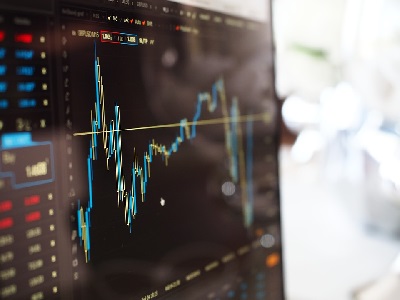
What about going digital and performing direct trading?
If you are a finance savvy retail investor, you might have heard of the Singapore Diamond Investment Exchange (SDix). SDix was launched in May 2016 and it is the world’s first commodity exchange trading in physically settled diamonds. One interesting feature of this platform is that it allows potential investors to browse and buy single stones graded by GIA.
And like any other financial markets, the world of diamond trading is a shark tank where professionals have huge leverage over the everyday investor.
Another caveat here is the lack of tangible information (apart from a GIA grading report) to make an educated purchase decision. As I explained in this article, 2 diamonds with identical specifications on paper can be totally different from each other in appearance and performance.
But that’s not the main issue with this trading platform if you are looking at it from the perspective of an everyday investor.
The problem is that investment grade diamonds are almost non-existent on the exchange. What you get there are just the typical lower tier goods you can easily get anywhere else. So, you are essentially back to square one.
If you are dead set on getting exposure in the diamond trade, I believe that stocks of mining companies or jewelry retailers are far better options to consider rather than buying physical diamonds for investments.
This is because you get better liquidity with stocks and transparency of market prices.
Here’s a list of companies that might interest you. I’ve included their corresponding stock symbols for your convenience.
Tiffany & Co – NYSE: TIF
Signet – NSE: SIGNET
Rio Tinto Ltd. – RIO.AX
Anglo American PLC – AAL.L
Dominion Diamond Corp. – DDC.TO
Lucara Diamond Corp. – LUCRF
* To be clear, I am NOT offering any financial advice to buy or sell stocks. I’m only listing examples here for educational purposes.
Conclusion – Stay Away If You Are An Average Joe

If investing in diamonds is as straightforward as what others have made them out to be, you probably won’t be seeing any jewelry stores in business. Every single jeweler would be in the business of investing rather than selling to consumers.
In my opinion, the media is partly responsible for sensationalizing the astronomical returns and record breaking prices from diamond auctions. Unfortunately for most people, physical diamond investing is a fool’s game for the average joe.
If you do not have the ability to procure investment grade diamonds (typically cost upwards of 1 million dollars), you shouldn’t be in the market.
And even if you are a high roller, ask yourself whether you really understand what you are buying and whether you fully comprehend how the diamond trade works.
In conclusion, diamonds are meant for adornment and for visual enjoyment. But please don’t buy an engagement ring and view them as a form of investment. You are only deluding yourself into thinking it will hold its value.
Now, thank me for writing this article because I just did you and your wallet a huge favor.
Leave A Comment

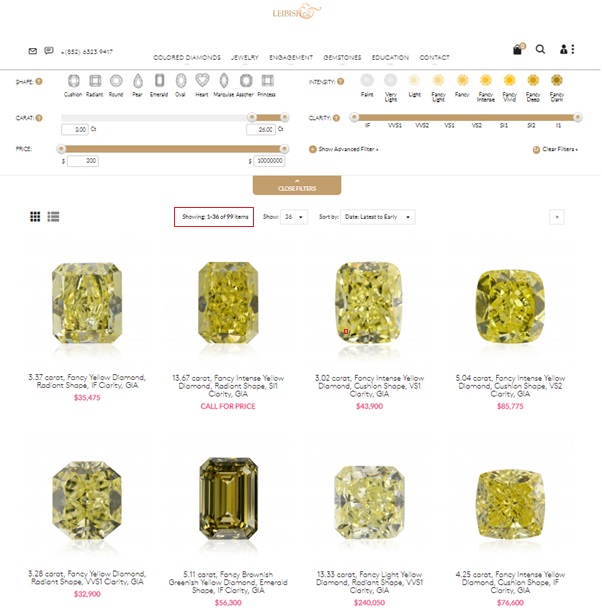









40 Comments
You mention that diamonds aren’t investment grade worthy if they cost less than 1 million dollars. In your BlueNile screenshot, I noticed the 2 D FL 10 carat diamonds costing more than 1 million dollars each. Why are you making contradictory statements here?
Did you even read the entire article carefully? Noticed that I underlined the word “intrinsic value”? I’m using these examples to show a case in point. These diamonds are NOT as rare as what consumers think they might be. Also, the prices that you see at BlueNile are listed as retail pricing. There’s a big difference between buying something valued at retail pricing and its inherent value.
Of course, if you think I’m wrong about 2 carat D color round diamonds being terrible assets, you can always go ahead and gamble 1 million dollars away. I would love for you to prove me wrong when you make a profit in 5-10 years’ time down the road.
Hey Paul,
Thanks for writing up this comprehensive report and your financial insights. I had to ask; why are you doing this given that you run a diamond blog?
It seems obvious that you have an incentive to encourage people to spend more or even teach people to invest in diamonds? This post seem to be doing the complete opposite.
Also, the long term historic trend is suggesting that diamonds will rise in value because prices increase. If someone can buy and hold for an extremely long time, chances of them making money is good.
Dimitri
If you have been following the blog long enough, you will realize that I write articles from the perspective of a fellow consumer. I’m blunt and direct because I know what’s best for consumers when it comes to the industry. In a way, I’m on your side.
Buying a diamond ring for a proposal is completely different from buying a diamond ring as a form of investment. I need to set the mindset correct because I noticed a worrying trend in the market as more and more consumers are looking at diamonds as financial assets.
If you wanted to buy something and hold for the long term, the S&P 500 index is a much better purchase. Diamond prices will rise in the long term but that’s largely an instrument of inflation. I will say this again, if you are considering buying NON-investment grade diamonds, you are throwing money down the drain. Unless you have the pockets to make large purchases, you will unlikely succeed in this niche.
I have something to clarify with black diamond investment programs that I heard from my friend. In your article, you mentioned that pink diamonds are a good investment if we somehow managed to find the larger stones. What is your opinion on black diamonds?
I’m not sure you are referring to the Black Diamond Investment group or investing in physical black diamonds. Now, I would assume that you are talking about the latter. Black diamonds are basically natural diamonds that are choked full of inclusions. They have so much inclusions in them that they become opaque and appear black!
I personally see no value in such diamonds nor see them being a thing of the future. So, black diamond investments are generally terrible and much worse than the examples I named in my write up.
With the influx in lab created diamonds, what do you think would be the impact on natural pink diamonds? Are pink diamonds good investments since their supply is now increased?
Why invest in diamonds or waste money buying an engagement ring? I just don’t get the hype. My wife is happily married to me with a simple wedding ring with no gemstones on it.
Good point. Why invest in diamonds when there are better forms of money producing assets one can buy? Why buy a car and get into debt? Why dine in a fine restaurant when you can simply cook at home? I guess different people have different ways of looking at things.
I’ve recently come across a 2.5ct GIA D IF diamond in a solitaire platinum setting. My wife and I had seen it in person. We both think it is very lively and sparkly. The jeweler has offered us 10% off the price of the ring and we have till the end of the week to decide on it. This is for a 30 year anniversary gift for my wife and is a huge purchase for us. We are wondering what the investment value of the ring 10 years down the road would be. The jeweler told us that diamond prices have been rising because demand is recovering. He also said that the ring will only appreciate in value in future but do not trust him completely. We hope to seek your opinion on it from a neutral 3rd party. Could you kindly offer your advice?
Have you even been reading anything on this page?
Think about it. If someone is pitching to you about a 2 carat D/IF diamond as being a solid investment grade purchase, why is he even selling it to you in the first place?
Try to look through the marketing fluff and sales pitch being thinking logically. If this was indeed such an awesome purchase at a great price, wouldn’t it make sense for the seller to keep and hold onto the “investment-worthy” diamond? Why would someone sell you an “asset” that would give him/her better returns in future?
And you guessed it right… It’s to make a profit off you.
Let me tell you something. If the jeweler can offer a 10% discount on the ring (it’s just a marketing tactic), the price of the ring is too high to begin with.
So, the next time your financial advisor or the sales person in a jewelry store markets diamonds as a form of alternative investment vehicle, be skeptical and start asking questions why.
Because if you don’t think and simply hand over your hard-earned money, chances are you will see significantly less of it in the future.
You mentioned diamond equity investments as being more viable than buying physical loose diamonds for collection. Besides mining companies and retailers, would you consider the equity market for product manufacturers like Sarine Technologies?
Sarine is one of the largest supplier of manufacturing equipment in the industry. In my opinion, it is always better to invest in equity of related companies as they offer better liquidity in a financial market.
Now, this is not a buy or sell call to buy stocks in Sarine Technologies or any of the companies I mentioned in the article.
As an investor, you have to do your own due diligence on the risks and business fundamentals of these companies. I need to restate this: I’m just listing examples of diamond equity investments for educational purposes.
For further readings, these might interest you:
https://beyond4cs.com/cut/what-is-a-sarin-scan/
http://sarin.listedcompany.com/review.html
How do the sellers or buyers determine the resale value of diamonds? Is there any kind of price chart or report that is publicly available?
The resale value of diamonds is driven fundamentally by the laws of demand and supply. In the industry, the Rapaport report offers some pricing details of small sized diamonds (e.g. 10 carats and below) that businesses use. I want to highlight that the Rapaport report is very limited in its use to determine the resale value because of many other factors involved. Read this article I wrote here and you’ll know why. More importantly, information like this is supplied and applicable for non-investment grade diamonds.
That’s a very sobering article Paul! I think you’ve just saved me – and a lot of other people I’m sure – from falling for the “diamonds are a great investment” trap that you get from some jewelers.Thanks for the info. Glad to have you on the consumer’s side :)
I have something to clarify with black diamond investment programs that I heard from my friend. In your article, you mentioned that pink diamonds are a good investment if we somehow managed to find the larger stones. What is your opinion on black diamonds?
I’m not sure you are referring to the Black Diamond Investment group or investing in physical black diamonds. Now, I would assume that you are talking about the latter. Black diamonds are basically natural diamonds that are choked full of inclusions. They have so much inclusions in them that they become opaque and appear black!
I personally see no value in such diamonds nor see them being a thing of the future. They are unlikely to increase in value nor will see financial growth in my opinion. So, black diamond investments are terrible and much worse than the examples I named in my write up.
Hi,
What about D color, Flawless, 50 Cent diamond at US$ 2000 Amount.
Should it be bought ? If i want to mount it in ring & keep for 20 years down the road.
I just expect US$ 5000 buy back value after 20 years.
Is current price is worth and my exceptions are reasonable
If you are asking me this question, it tells me one thing. You didn’t read through the article nor did you understand it.
Could you comment on wholesale melee (1.3mm round .01ct for example) as a way to store value in something other than cash but yet be liquid enough to sell if needed – maybe not necessarily as a investment vehicle that is expected to earn great returns but similar to holding silver or another PM? From what I understand much of the cost in melee is the cutting/polishing which perhaps mitigates the fluctuation of the underlying diamond value and makes it track inflation if nothing else.
Whether it is melees or larger stones, the outcome is the same. If you are here asking me this kind of questions, it actually shows the depth of knowledge you currently have. You had better stay away from investing in diamonds.
With regard to my level of expertise, one must start somewhere on the journey of knowledge otherwise one never reaches any worthwhile destination. You seem a bit cynical and condescending in your responses to people, rather than helpful. Thank you nonetheless.
I actually don’t mean to come across as condescending. The point is, if you are looking for better storage of value with good liquidity, there are far better avenues to do that. Gold and silver would be far better options. My stand is and I am not afraid to be brutally honest about it; people who “invest” in diamonds basically believe in the greater fool theory with the odds heavily stacked against them. I don’t want to see readers ending up with the shorter end of the stick.
Dont compare everything to money. some things are just made invaluable like love. you dont understand that. Those who consider a diamond wedding ring as an investment should not marry to anyone. hehe
Hi Paul, thanks for writing this up! This might be slightly off topic: I have a question not so much about investments but about prices of pink diamonds. I’ve heard that pink diamonds have a limited supply as the Argyle mine is closing (please correct me if I’m wrong). Despite them being a terrible form of investment as you said, would Argyle pink diamonds prices getting higher and higher rapidly in the future? I’m simply wondering if now would be the best time to purchase one. Thanks in advance.
The Argyle mine is closing down soon and they are a source of pink diamonds. So, there is going to be a supply issue with pink diamonds. If you believe that pink diamonds will still be the fad, by all means put your money there. As a caveat, if you want to invest in pink diamonds, you should be buying those record breaking stones in auctions and not those smaller than 0.5ct in sizes. There are simply too many of the tiny stones around for them to be worthwhile investments.
Hello Paul. Always interesting to read your straight forward tell it like it is articles. I do have a question about ‘smaller’ potential investment grade colored diamonds. I understand that Fancy yellow is the most common fancy color out there in terms of availability, but still rare in the overall scheme of things. Would a super saturated fancy vivid yellow zimmi be in a different category in terms of rareness and appreciation potential? Say a 3 carat stone, VS2 clarity. It isn’t sotheby’s Or anything of the like, but I have had a relatively hard time finding zimmi level saturated stones in the 2 carat plus sizes, and I would think 3 carats is an ‘entry level’ worthy stone in terms of rarity and relative demand. Just wondering what your thoughts are. Thanks.
Actually, fancy brown is the most common color because of its massive production volume. Really, 2 to 3 carat size diamonds even if they are fancy intense yellow are nothing special. There’s just too much of them to go around (on a relative scale) that will make them investment worthy. Buying them to wear is a different thing though but as an investment, don’t.
Actually, I was referring the fancy vivid yellow with an inner grade that is off the charts saturated. My understanding that the most vivid yellows at the 3 carat weight are hard to come by, especially zimmi diamonds.
Well, I easily found more than 100 fancy vivid yellow diamonds above the size of 2ct available for sale now at this point in time. And that’s just looking at 2 inventory systems only. How many 1000s more do you think are in circulation in the market? If you want to invest, an entry level would be at least a 10ct for common colors like fancy vivid yellows. Otherwise, there’s no scarcity factor here at all.
Well, I’ve simultaneously worked with 5 different brokers, and anything in that range of 2 carats and relatively good clarity (VS2) or better doesn’t yield that many results. I’ve not seen more than 15 in that top vivid range and certainly not 100 or 1000 and I am trying my best to find them by working with multiple fancy colored diamond specialists. And also factor in that within the vivid range, the inner grade color saturation range is much much wider than the D to Z range. Every vivid yellow isn’t apples to apples, and the color within and relative scarcity vary wildly. I’ve seen many more faintly saturated yellows that seem to barely make the grade. Very vivid he’s with good clarity at those sizes are harder too find. Between 2 and 3 carats, there are some good examples, but beyond 3, they aren’t easy to find. But, To your point, let’s say there are 100 in this top grade range within vivid. I’ve not seen that many from five combined brokers that are VS2 or better with top color saturation, and only one that is pure type IB zimmi. But let’s just say that all 100 of your examples are the top of the top in the vivid range. I’d say that 100 or fewer examples in the world of a limited natural commodity is considered scarce. Perhaps it isn’t scarce like pink or blue or green. But that’s like saying an NBA level basketball player isn’t scarce just because they aren’t Kobe Bryant or Michael Jordan or LeBron James and don’t command $30 million a year salaries. Those ‘lesser’ and more ‘abundant’ level NBA players are still few and far between and they will get paid millions a year regardless which is a relatively rare level of compensation. It’s all relative.
You seemed ignore my point about vivid in your first reply and commented on intense. And in your reply to my second post ignored the utter importance of actually color saturation in terms of rarity and pricing within the vivid range. And my continued mention specifically about the Ib zimmi diamond is also conveniently ignored. But that’s ok Paul. I don’t think I’ll get an honest answer out of you once you are determined to try and prove your point. I guess I’ll end the conversation here since I have yet to get an actually answer to my actually question.
I am not ignoring your points. Your definition of what makes a good Fancy Vivid diamond is going to be different from mine. And I do know that fancy color diamonds will look different at least in their color distribution and saturation. I would even argue the cut quality.
I actually gave you an answer. To your point:
But that’s like saying an NBA level basketball player isn’t scarce just because they aren’t Kobe Bryant or Michael Jordan or LeBron James and don’t command $30 million a year salaries. Those ‘lesser’ and more ‘abundant’ level NBA players are still few and far between and they will get paid millions a year regardless which is a relatively rare level of compensation. It’s all relative.
Yeah. If I’m buying a diamond for INVESTMENT, I am going to make sure it is Kobe Bryant or Michael Jordan level if I want to have a good chance of making any return on investment. I want exceptional stones for investments because I know in this industry how alot of scumbags are trying to market their mediocre stones as investment grade when they are not. if not, go ahead and buy whatever marketing bullshit a jeweler is trying to tell you about a Zimmi diamond and sell the diamond back to them the next month or the year after. Let me know if they are willing to even take that back in at the retail price you pay.
You can choose to ignore this advice. Sure, the other NBA players must have some degree of skill and expertise to make it to the league. And if this were to be an analogy to the world of diamonds, Kobe Byants and Michael Jordans are those you see in Sotheby auctions with record breaking carat sizes. The NBA league would be the generic pink/blues/reds and this would be the other professional players in the league.
For fancy vivid yellows? Well, I’m not sure even players in lower tier China professional league would even qualify to be a good analogy for them. They are going to be even lower down in the pecking line.
And I will stress again, if you are buying a diamond solely for wearing and away from the notion of them being investments, you will save yourself from disappointment.
You points are well taken here. I will keep it all in mind. I wanted to buy as a gift to be worn with some degree of maintaining or modestly increasing in value if the decision to move it should arise in the future. I certainly can’t afford the Jordans of LeBrons of the diamond world, but I thought I could stretch it a bit because I thought it might be safe to choose a high quality stone, exceptional color, good color dispersion, etc. But I suppose I am the consumer and have no inside track on how the industry really is, despite how much I educate myself on the trade. All in all, I appreciate the insight.
I was looking at a fancy vivid orangy yellow at 3 carats. Inner grade is exceptional and Color is truly exceptional, color dispersion is quite good. Sierra Leone zimmi if you will, and there are no issues with symmetry and polish (VG and EX). I figured from what I have read (could be wrong here) that a modifier of a more rare color, that being orange, should not lower value, and if anything may bump it up to a slight premium. A modified brilliant cushion cut with a 70% table with dimensions of 8.2 x 7.7 x 5.38mm. Depth is about 70%. No fluorescence. VS2.
I know it’s impossible to value a stone sight unseen, but based on the information given, what is your honest opinion on a fair value range? I am going to see the stone in two days, and what I thought might be an exceptional value, may no longer hold true, given your insights in yellow diamonds. Any thoughts are greatly appreciated.
It’s not possible for me to valuate a diamond accurately based on a description especially a fancy colored one. You seem very focused on claiming “Sierra Leone Zimmi” would make the color rarer and whatever marketing bullshit you are fed by the seller. What does the GIA report say about the diamond?
Are buying and selling diamonds your main source of revenue?
Since buying diamonds in general is a losing proposition, how do you make it a reasonable transaction?
What are the terms you would sell to a customer as far as the quality of the item and your profit on the sale?
How long would you expect the customer to hold on to the purchase before selling and to whom would you suggest to sell it to?
From your article you seem to suggest that you sell diamonds only if they are at $1 million or more.
Do investment companies like Fidelity Investments sell diamonds and buy back the same diamonds later?
Thanks for reading this and even more thanks if you respond.
I don’t sell diamonds nor do I have any vested interest in asking people make investments. The point of this article is to point out some of the shady marketing tactics that retailers use to sell diamonds and the common misconception that buying a diamond ring for the vast majority of consumers can be seen as a store of value.
Diamonds found in the general market are not meant as an investment vehicles and if someone truly wants to make money “investing in diamonds”, they need to look at the really rare stones and these command sky high prices typically found in auctions. The better way to invest for the layman would be the stock market and not the diamond industry.
As a certified gemologist and someone working in the jewelry industry for 7 years (now working in a different industry), I agree 100% what Paul has mentioned.
Go for the top of the top diamonds if you want to “invest”. That’s what separates you from the rest of the crowd.
What is the meaning of setting price?
eg $5800.00 setting price.
Is it the price of the complete ring or for the diamond’s setting only.
That means that the ring setting costs $800 and the price of the diamond will be completely separate depending on what you choose for the center stone.